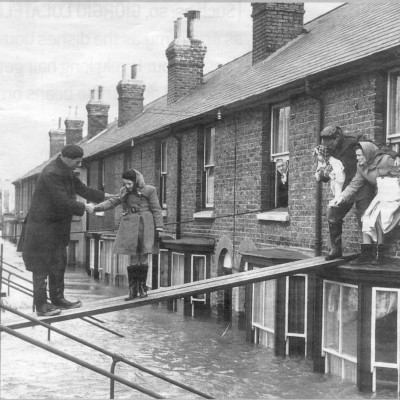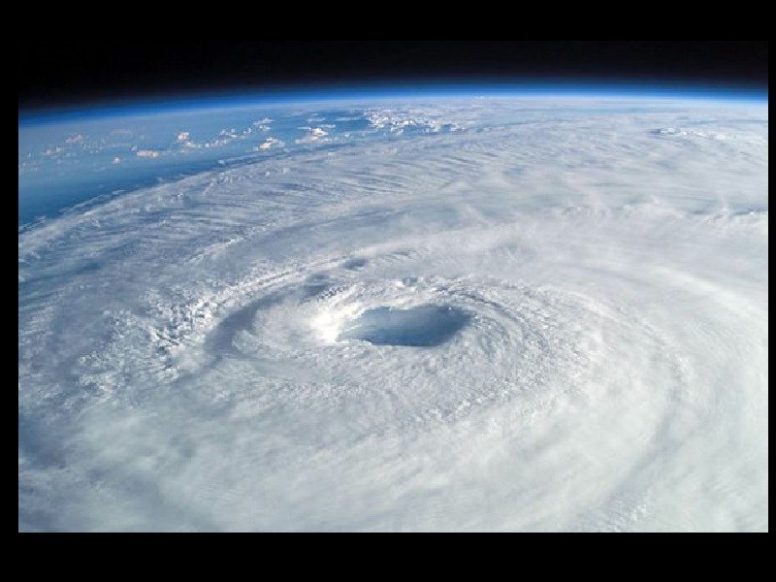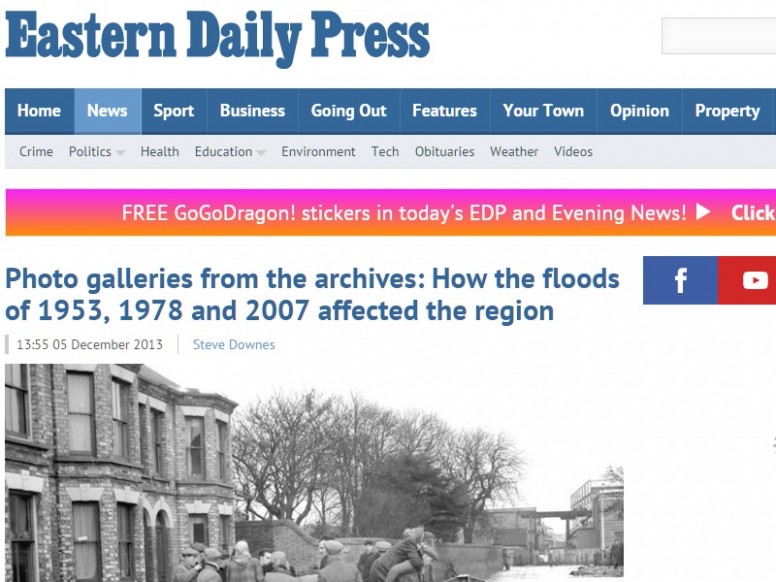Storm Event
The worst national peacetime disaster to hit the UK
Source
The storm developed to the southeast of Greenland on the 28th January 1953 and moved eastwards, crossing Scotland to the north, before travelling in a south-eastward path across the North Sea and into Germany. The central pressure of the storm over the northern North Sea dropped down to 964 mbar (Met Office, 2014). On 31st January at about 18:00, very strong northerly winds were generated over the North Sea caused by interaction with an anti-cyclone west of the UK. The highest recorded ten-minute mean wind speed at Stonehaven in Scotland was 65 knots [33 m/s] from a north-westerly direction (Hickey, 1997).
Only 4 of the UK National Tide Gauges were operational at the time (3 in the North Sea). We have undertaken an extensive data archaeology exercise to assess the sea level conditions during this event (Wadey et al., 2015). The 1953 event was exceptional in the southern North Sea: the skew surge is likely to have been >2.3 m at Lowestoft (Wolf and Flather, 2005), generating water levels with return periods of approximately 1 in 400 years.
The storm is also estimated to have generated 1 in 50 year waves in the North Sea, with significant wave heights of >7 m off the Norfolk coast (Wolf and Flather, 2005); whilst in Lincolnshire waves of >6 m “crashed” through defences (BBC, 1953).
Pathway
The extremity of the water levels and waves caused sea water to overflow, overtop and outflank man-made and natural defences in many locations along the east coast. There were also multiple catastrophic structural failures of sea walls and embankments, with a reported 1,200 breaches in flood defences (RMS, 2003). In some locations, there was repeated inundation over multiple tidal cycles (before/whilst defences were repaired).
Receptor and Consequence
This event was the most severe in the UK over the last 100 years (McRobie et al., 2005). English east coast towns between Spurn Head and Tilbury experienced catastrophic flooding (Hickey, 1997) whilst impacts in Scotland were severe with the destruction of sea defences, erosion and extensive wind damage (Hickey, 1997). Over 160,000 acres of land were flooded, 32,000 people were evacuated and there were 307 deaths in England and 19 fatalities in Scotland (Met Office, 2014). There was an estimated £50 million damage (approximately £1.2 billion in today’s money) (RMS, 2003). The Princess Victoria ferry sank in the Irish Sea, killing 130 people (BBC, 1953). The flood impacts were so severe due to lack of flood warnings, catastrophic defence failures, vulnerable coastal dwellings, and the flood happening at night (e.g. Steers, 1953; Baxter, 2005).
The storm surge also impacted the coasts of the Netherlands, Belgium and Germany; killing 1,800 people in the Netherlands, and up to 40 in Belgium (FLOODsite, 2008; Gerritsen, 2005).
Summary Table
| Loss of life | 307 fatalities on the English east coast directly caused by the floods. There were additional boat related casualties; and loss of life in the aftermath. |
| Residential property | 24,000 homes were flooded |
| Evacuation & rescue | 32,000 people were evacuated |
| Cost | £1.2 billion (2014 prices) |
| Ports | The entire dock area was reportedly flooded at Felixstowe Port causing major disruption |
| Transport | 160 km of road and 320 km of railway affected |
| Energy | 2 power stations out of action |
| Public services | * |
| Water & wastewater | Water and sewage services “out of action” & damage to infrastructure reported to have contaminated peoples drinking water (Met Office, 2014; Baxter, 2005; Environment Agency, 2013) |
| Livestock | 187,000 |
| Agricultural land | 650 acres |
| Coastal erosion | There was considerable erosion in some places along the east coast |
| Natural environment | * |
| Cultural heritage | * |
| Coastal defences | 1,200 breaches |
*No known sources of information available
We rely on submissions from the public to maintain these images. If you witnessed this event, please help by uploading your photos.
References
- Met Office, (2014). 1953 east coast flood -60 years on. Available at: http://www.metoffice.gov.uk/news/in-depth/1953-east-coast-flood.
- Hickey, K. R. (1997). Documentary records of coastal storms in Scotland, 1500-1991 A.D. Coventry University. Available at: https://curve.coventry.ac.uk/open/file/aa6dfd04-d53f-4741-1bb7-bdf99fb153be/1/hick1comb.pdf.
- Wadey, M. P., Haigh, I. D., Nicholls, R. J., Brown, J. M., Horsburgh, K., Carroll, B., Gallop, S. L., Mason, T. and Bradshaw, E. (2015). ‘A comparison of the 31 January–1 February 1953 and 5–6 December 2013 coastal flood events around the UK’. Frontiers in Marine Science, 2. Available at: http://journal.frontiersin.org/article/10.3389/fmars.2015.00084/abstract(Accessed: 14 March 2016).
- Wolf, J. and Flather, R.A. (2005). ‘Modelling waves and surges during the 1953 storm’. Philosophical Transactions of the Royal Society A, 363,pp.1359–1375.
- BBC, (1953). ‘1953: Violent storms claim hundreds of lives’. BBC On this Day. Available at: http://news.bbc.co.uk/onthisday/low/dates/stories/february/1/newsid_3749000/3749771.stm (Accessed: 27 August 2014).
- RMS, (2003). 1953 UK floods: 50 year retrospective, London.
- McRobie, A., Spencer, T. and Gerritsen, H. (2005). ‘The Big Flood: North Sea storm surge’. Philosophical transactions. Series A, Mathematical, physical, and engineering sciences, 363(1831), pp.1263–70. Available at: http://rsta.royalsocietypublishing.org/content/363/1831/1263 (Accessed: 20 October 2015).
- Steers, J.A. (1953). ‘The East Coast Floods’. The Geographical Journal, pp.280–295. Available at: http://www.jstor.org/stable/1790640?seq=1#page_scan_tab_contents (Accessed: 20 October 2015).
- Baxter, P.J. (2005). ‘The east coast Big Flood, 31 January-1 February 1953: a summary of the human disaster’. Philosophical transactions. Series A, Mathematical, physical, and engineering sciences, 363(1831), pp.1293–312. Available at: http://rsta.royalsocietypublishing.org/content/363/1831/1293 (Accessed: 5 March 2015).
- FLOODsite, (2008). ‘The disaster of the 1953 flood’. Floodsite Project. Available at: http://www.floodsite.net/juniorfloodsite/html/en/student/thingstoknow/hydrology/1953flood.html (Accessed: 29 September 2014).
- Gerritsen, H. (2005). ‘What happened in 1953? The Big Flood in the Netherlands in retrospect’. Philosophical transactions. Series A, Mathematical, physical, and engineering sciences, 363(1831), pp.1271–91. Available at: http://rsta.royalsocietypublishing.org/content/363/1831/1271 (Accessed: 15 February 2015).





